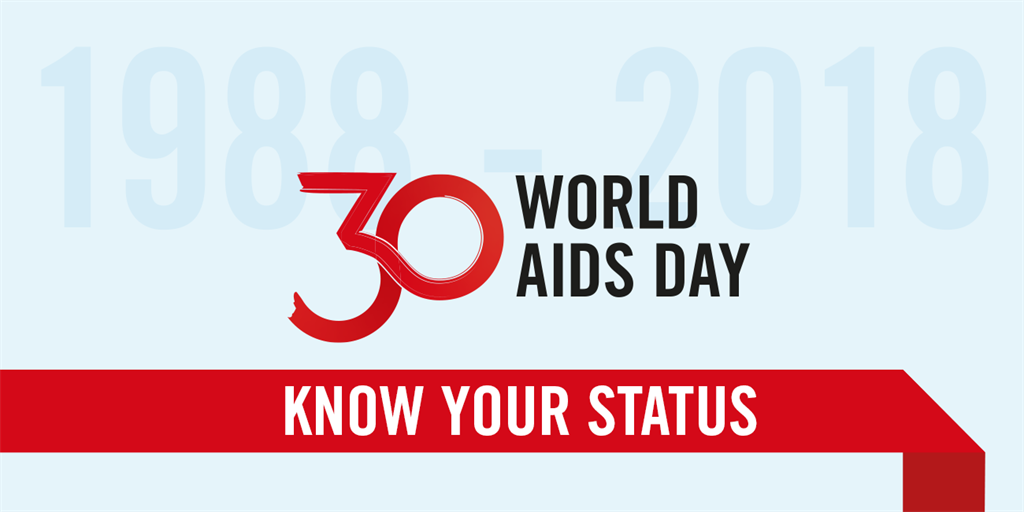19
Mar
World
25
Feb
19
Feb
04
Feb
28
Jan
06
Dec
30
Nov
09
Nov
Revolutionary Monsters: the Suicide of Identity Politics
“The monsters are real” (Antonio Negri and Michael Hardt)In their discourse on the revolution, Negri and Hardt use the concept of a positive generative monster. Monstrosity arises as otherness, something contrary to the existing order. It is a freak child who differs from her mother. Monstrosity implies imbalance and terrifying excess. The framework of existing rationality is too narrow to accommodate the excess of its creative forces. It is this terrifying monstrous excess that points towards an alternative.The example of a struggle against monsters, that Negri and Hardt suggest, are witch hunts in Europe and America in the 16th and 17th centuries. “Witches” is a way of naming those who transgress the framework of the dominant religious dogmas at that time. As an example of the modern forms of monstrosity, Negri and Hardt point to the image of a woman whose behavior does not coincide with the role traditionally attributed to her. These are, for instance, women who are not willing to do affective labor on call (“smile appropriately, tend to hurt feelings, knit social relationships, and generally perform care and nurturing”), for this reason they are perceived as a kind of monster.Although Negri and Hardt emphasize the positivity and generativeness of monsters, one can argue with them, noting that monsters are in no way positive or generative from the point of view of the existing rationality framework — they are exclusively destructive and dangerous (this is what the word “monster” means) . Once they gain a characteristic of generativeness and positivity, they can no longer be considered monsters.According to Negri and Hardt, “Revolution is monstrous”. They introduce a terminological distinction between emancipation and liberation. The revolution pursues the goal of liberation, while identity politics — the goal of emancipation. The latter, if focused on itself, contradicts a truly revolutionary goals. Identity politics suggests that there is something universally shared by all members of a particular oppressed group: a shared nature or essence (for example, feminism is based on the imputed unity of female gender).Identity politics leads the struggle towards emancipation of a certain group united based on the shared identity, but at the same time it imposes this identity. Because of this imposition the struggle for the emancipation of a certain class, race, gender, sexual identity can serve as a means for rebellion and emancipation, but ultimately it contradicts the social metamorphosis necessary for truly revolutionary changes. Identity politics is revolutionary only if, paradoxically, is committed to the abolition of identity, that is focused on self-destruction.Emancipation sets as its goal freedom of identity, freedom to be who you “really are”, liberation is revolutionary and seeks freedom of self-determination and self-transformation, freedom to determine who we can be.
In other words, identity politics in itself implies the struggle against social subordination, its aim is empowerment of the oppressed identity, but not the struggle aimed at transformation and self-elimination of identity. Any identity that is established and empowered, becomes dominant.
A revolutionary politics can start with the emancipation of identity, since all the revolutionary movements, as Negri and Hardt believe, are launched by the struggle against the oppression of a certain identity, but but cannot end there.
Negri and Hardt explain this as follows:“Black nationalism in the United States, for example, which takes inspiration from the anticolonial struggles and their goals of national liberation, is seldom configured in territorial terms but is aimed rather at the sovereignty of the racial identity, which implies separation and self-determination, controlling the economy of the community, policing the community, and so forth. It is easy to think of certain streams of feminist politics that are characterized similarly by gender nationalism, or gay and lesbian politics by gay and lesbian nationalisms, and there is a long and complex history of worker politics that takes the form of worker nationalism. The metaphor of nation, in each of the cases, refers to the relative separation of the community from the society as a whole and suggests the construction of a sovereign people. All these nationalisms, in contrast to the multiculturalist struggles for recognition, are combative formations that constantly rebel against structures of subordination. Such nationalisms do, however, end up reinforcing the fixity of identity. Every nationalism is a disciplinary formation that enforces obedience to the rules of identity, policing the behavior of members of the community and their separation from others.”
The task of identity politics is to render violence and subordination visible, rebel against them and struggle for for emancipation, but after that one cannot return to an emancipated identity and dwell on it. To become revolutionary, identity politics must find a way to keep moving forward. The task of liberation prevents annihilation of the revolutionary movement and keeps the rebellious function of identity, leading identity politics to the revolutionary project: its self-abolition. Negri and Hardt introduce a conditional distinction between emancipatory and revolutionary feminism. The former is aimed at consolidating and empowering of the identity of a woman, the latter is aimed at abolishing of a woman as identity.Donna Haraway describes such revolutionary project as “the Utopian dream of [. . .] a monstrous world without gender.” A revolutionary project goes beyond the purely reformist perspective of emancipation: instead of the goal of preserving sexual differentiation, while depriving it of its hierarchy (here lies a trap, because identification based on sexual differentiation itself implies hierarchy), the revolutionary project seeks to abolish identification based on sexual differentiation as such. This does not mean that all differences will be erased, monstrosity carries the potential of new differences, but nothing that we now recognize as gender.Negri and Hardt simultaneously flirt with identity politics, asserting its necessity and criticize it. They resort to a subtle tactic, explaining that every time they claim that revolutionary stage must follow the struggle of identity politics, do it only for the sake of convenience, while in reality, the task of emancipation and the task of liberation must be carried out simultaneously, since there is the risk that a revolutionary project will be postponed indefinitely.Considering all the absurdity of this tactic (the identity politics is necessary, but only for its self-abolishment), one should think about whether the need of such a tactic is the result of the identity politics in action: identity politics which not only postpones the revolutionary project to infinity, but fundamentally opposes it. Negri and Hardt idealize (are forced to?) identity politics, suggesting that it can voluntarily commit suicide.What indicates a dominant position is a ban on criticism. Maybe something is wrong with feminism, since in today’s world it cannot be directly criticized? If one doesn’t resort to such tactics, she will be automatically considered to be an accomplice of patriarchy, with all the ensuing consequences in the form of social ostracism.For Negri and Hardt, the most obvious revolutionary form of identity politics is queer politics, since it inextricably links identity politics with criticism of identity. Queer is not an identity, but rather a process of disidentification, that is, destabilization of an identity that is not interested in its consolidation or stabilization. The question arises if queer politics should be considered a form of identity politics, or maybe it is an independent revolutionary phenomenon opposing it?It should be noted, however, that the term “queer” is increasingly used in public discourse not as a critique of identity, but as one of the identity categories technically included in LGBT community, such understanding of it deprives the term “queer” of its monstrous revolutionary potential, reducing it to emancipation.Identities can be emancipated and empowered, but only queer monsters can liberate themselves. The reverse side of the struggle for the assertion of identity is the trauma of oppression (one can even claim that it forms this identity). The identity politics acts “on behalf” of the trauma and carries the risk of full reduction of a self-determination process to it. The primary mode of such acting is purely reactive, it’s motivated by a justified desire to take revenge on a universalized source of trauma.Monsters act differently, they do not reduce themselves to an existing trauma and do not act on its behalf. Being a monster means to proceed on an endless journey of searching for a new traumatic experience (what is new is inevitably traumatic).
Negri and Hardt introduce a conditional distinction between emancipatory and revolutionary feminism. The former is aimed at consolidating and empowering of the identity of a woman, the latter is aimed at abolishing of a woman as identity.Donna Haraway describes such revolutionary project as “the Utopian dream of [. . .] a monstrous world without gender.” A revolutionary project goes beyond the purely reformist perspective of emancipation: instead of the goal of preserving sexual differentiation, while depriving it of its hierarchy (here lies a trap, because identification based on sexual differentiation itself implies hierarchy), the revolutionary project seeks to abolish identification based on sexual differentiation as such. This does not mean that all differences will be erased, monstrosity carries the potential of new differences, but nothing that we now recognize as gender.Negri and Hardt simultaneously flirt with identity politics, asserting its necessity and criticize it. They resort to a subtle tactic, explaining that every time they claim that revolutionary stage must follow the struggle of identity politics, do it only for the sake of convenience, while in reality, the task of emancipation and the task of liberation must be carried out simultaneously, since there is the risk that a revolutionary project will be postponed indefinitely.Considering all the absurdity of this tactic (the identity politics is necessary, but only for its self-abolishment), one should think about whether the need of such a tactic is the result of the identity politics in action: identity politics which not only postpones the revolutionary project to infinity, but fundamentally opposes it. Negri and Hardt idealize (are forced to?) identity politics, suggesting that it can voluntarily commit suicide.What indicates a dominant position is a ban on criticism. Maybe something is wrong with feminism, since in today’s world it cannot be directly criticized? If one doesn’t resort to such tactics, she will be automatically considered to be an accomplice of patriarchy, with all the ensuing consequences in the form of social ostracism.For Negri and Hardt, the most obvious revolutionary form of identity politics is queer politics, since it inextricably links identity politics with criticism of identity. Queer is not an identity, but rather a process of disidentification, that is, destabilization of an identity that is not interested in its consolidation or stabilization. The question arises if queer politics should be considered a form of identity politics, or maybe it is an independent revolutionary phenomenon opposing it?It should be noted, however, that the term “queer” is increasingly used in public discourse not as a critique of identity, but as one of the identity categories technically included in LGBT community, such understanding of it deprives the term “queer” of its monstrous revolutionary potential, reducing it to emancipation.Identities can be emancipated and empowered, but only queer monsters can liberate themselves. The reverse side of the struggle for the assertion of identity is the trauma of oppression (one can even claim that it forms this identity). The identity politics acts “on behalf” of the trauma and carries the risk of full reduction of a self-determination process to it. The primary mode of such acting is purely reactive, it’s motivated by a justified desire to take revenge on a universalized source of trauma.Monsters act differently, they do not reduce themselves to an existing trauma and do not act on its behalf. Being a monster means to proceed on an endless journey of searching for a new traumatic experience (what is new is inevitably traumatic).“This revolutionary process of the abolition of identity, we should keep in mind, is monstrous, violent, and traumatic. Don’t try to save yourself — in fact, your self has, to be sacrificed! This does not mean that liberation casts us into an indifferent sea with no objects of identification, but rather the existing identities will no longer serve as anchors. Many will pull back from the brink and try to stay who they are rather than dive into the unknown waters of a world without race, gender, or other identity formations. Abolition also requires the destruction of all the institutions of the corruption of the common […], such as the family, the corporation, and the nation. This involves an often violent battle against the ruling powers and also, since these institutions in part define who we now are, an operation surely more painful than bloodshed. Revolution is not for the faint of heart. It is for monsters. You have to lose who you are to discover what you can become” (Negri and Hardt).
Source
22
Oct
19
Oct



















